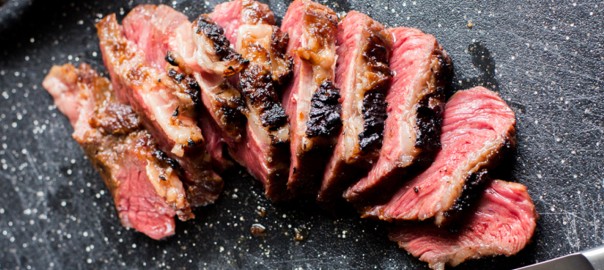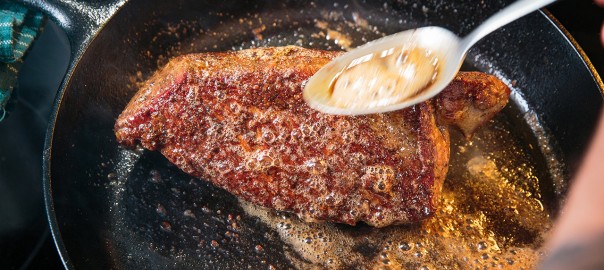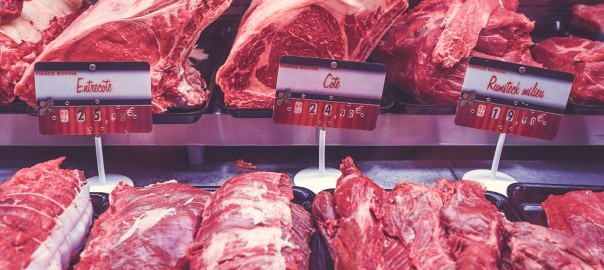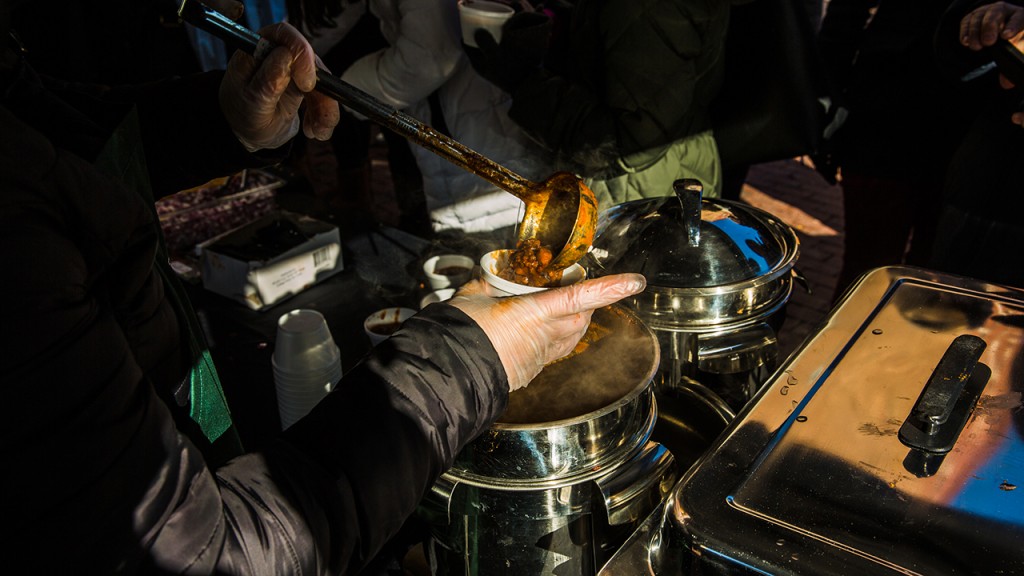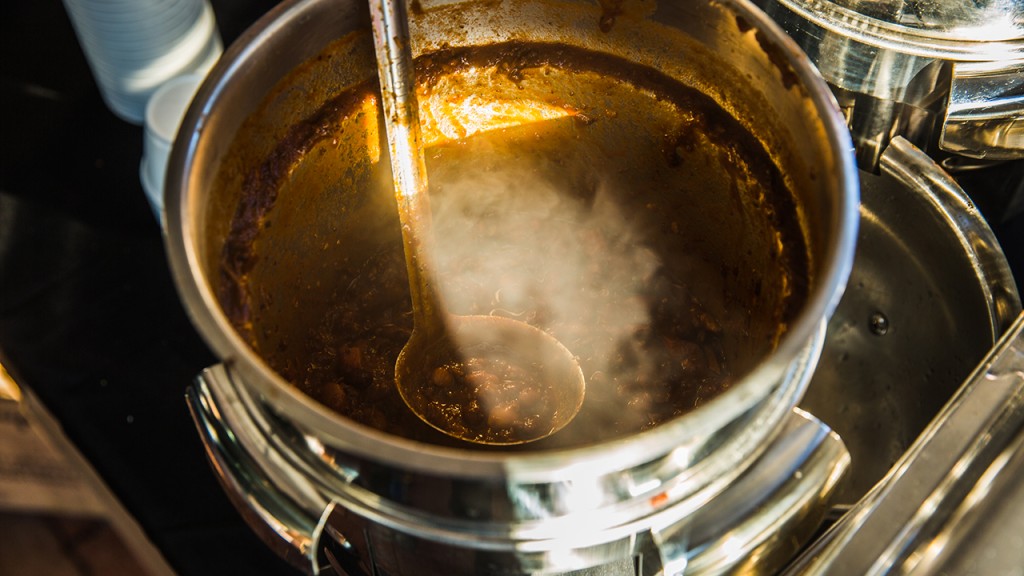One of the most surprising things we’ve discovered since launching ButcherBox a few years ago is that there is a growing, collective desire to know as much as possible about the food we eat.
This type of knowledge is also central to the ButcherBox mission. For us, it is vital to know as much as possible about the meat we are delivering to our members. This means going further than growing a database of delectable recipes or an understanding of nutritionists perspectives on grass-fed beef. We want to know the specifics about how the animals were raised, the methods used by the farmers we work, and the specifics of the grass or forage they feed their pastured livestock.
We recently realized that questions abound related to different cuts of beef. But a lot of the information that is out there about various cuts can be tough to swallow.
There is an array of resources available if you want to dive into the finer details of where cuts come from — you’ll have to bone up on terms like “primal cuts” and learn more than you’d care to know about which muscles cattle use most and what that means for the tenderness of certain steaks.
One issue that people seem quite interested in is the differences between cuts of meat that appear similar — like, say, a porterhouse versus a T-bone.
Well, let’s try to clear up as much as we can to avoid some of this common culinary confusion.
T-Bone vs. Porterhouse
There is only a slight difference in these two cuts, but, for those who love mouth-watering steaks, the contrast is stark. The porterhouse is a staple of steakhouse menus and a popular pick among meat aficionados, while the T-bone is usually the favorite of backyard grillmasters and novice chefs. The T-bone’s name comes from the bone that splits two different types of beef; one side is strip steak and the other is more tender beef.
The T-bone and porterhouse steaks actually come from the same area of a cow. However, the porterhouse is further down what is called the short loin. On one side of the bone — which is the cow’s vertebrae — is the strip loin or top loin, and this is where New York strip steaks are derived. The other half of the porterhouse is tenderloin.
And herein lies the difference. Because T-bone steaks are cut further away from the back of the animal, there is only a minimal amount of tenderloin. T-bones are small porterhouses. This is important because, if you haven’t figured out from its name, tenderloin is extremely tender and quite delicious. In a porterhouse, the tenderloin side is where filet mignon comes from.
So in reality, a porterhouse is a New York strip steak and a filet divided by a bone.
Officially, the rule is that the filet side of the bone has to be at least 1.25 inches thick to be a porterhouse.
Both are delicious steaks. Part of the reason is that the bone-in nature of these tender cuts adds flavor to already tasty steaks. However, be aware: Porterhouse steaks can be challenging to cook correctly. For best results, grill a porterhouse with the smaller, tenderloin section away from a direct heat source.
We could go on about the history of the name porterhouse steak, but that is a story for another day.
Prime rib vs. Ribeye
Similar to T-bone and porterhouse, the ribeye steak and prime rib come from the same section of the cow; in this instance, as the names hint, both are from the ribs.
However, the difference between these two cuts is in the manner of their preparation.
Ribeye is tender, flavorful beef that is cut away from the ribs and tastes excellent thrown on a grill with just a little salt and pepper for seasoning. Rib roast — also known as prime rib — is the same area, but is cooked with the bone — or bones — in place. Roasting this cut with the bone in place lets it cook in its own juices, giving it the highly-sought-after taste that justifies its often high price and central placement on steakhouse menus.
The best way to understand the difference between the two cuts is that ribeye is a prepared steak without connecting bones, and prime rib is the cooked, bone-in version of the same steak. By its very nature, there is a ribeye in every cut of prime rib.
And if you wonder where roast beef fits into this dynamic, that’s an easy one: generally, it is any cut of beef that is roasted. So, the rib roast or prime rib you get at a restaurant can be also called roast beef. Roast beef can also be top sirloin, tenderloin, tri-tip, chuck roast, or rump roast. Phew.
Flank steak vs. Skirt steak
These two cuts look very similar and each needs to be cut the right way to be appreciated fully. There are, however, a few essential distinguishing qualities between the two.
Unlike the previously-mentioned cuts, these two steaks come from two completely different sections of the cow.
Flank steak comes from the abdominal area of the animal, while skirt steak is from the diaphragm section. They are similar in their long, thin, and fibrous appearance, as well as their uses and taste. These steaks are sometimes confused with hanger steaks and flat iron steaks because of their appearance and various potential uses.
Both flank steak and skirt steak are great for marinating and are ideal for a variety of dishes, including fajitas, tacos, stir fry, steak sandwiches. They taste great right off the grill, but, because they are cut from a muscle that gets more usage by the cattle, these cuts can overcook easily and become tough. They are best when cooked to medium or medium-rare doneness.
The key to getting the most out of both of these flat steaks is to make sure you are cutting them properly. As we’ve mentioned before, these steaks must be sliced against the grain to unlock the best flavor.
Ground beef
While it is not a specific cut of meat, ground beef can cause some consumer confusion because there is such a wide variety of options that fall under the label, “ground beef.”
In a store or at a butcher shop, you are going to find that there are vast differences in where ground beef originates, as well as in its nutrition (fat) profile. For example, you are likely to find ground beef labeled as hamburger or ground chuck that is 85 percent lean and 15 percent fat.
While there is a variety of products out there, there are some important restrictions on ground beef to make sure that whatever you buy adheres to certain basic standards. According to the USDA Food Standards and Labeling Policy Book, ground beef may not contain added fat and must have a maximum total fat content of 30 percent. The meat can come from almost anywhere in the animal — and often does — but must be labeled differently if a large amount of cheek meat is used. Ground beef can also be specifically labeled ground chuck or ground round; in those instances, the meat must come from those specific regions of the cow.
The ground beef that is found in a monthly ButcherBox comes primarily from the chuck and round with some rib and sirloin fat. The ground beef is 85 percent lean and 15 percent fat; burger patties, however, are 80 percent lean and 20 percent fat. The difference in fat content translates to a difference in flavor. Quite simply, grill-cooked burgers taste better with a bit more fat mixed in with the lean meat.
Our in-house chef, Yankel Polak, says that one of the most popular burgers he used to make in his restaurant was made from a combination of ground chuck, ground short rib, and even some dry-aged ribeye scraps. So, it seems that getting the best ground beef mix is more of an art than a science.
Check out all our recipes for some more specific ways to prepare all these various types of beef. All the cuts above come in our monthly boxes, so if you’re not already a member, sign up to compare and contrast these amazing steaks on your own.
Featured image via Lukas Budimaier and Unsplash.




